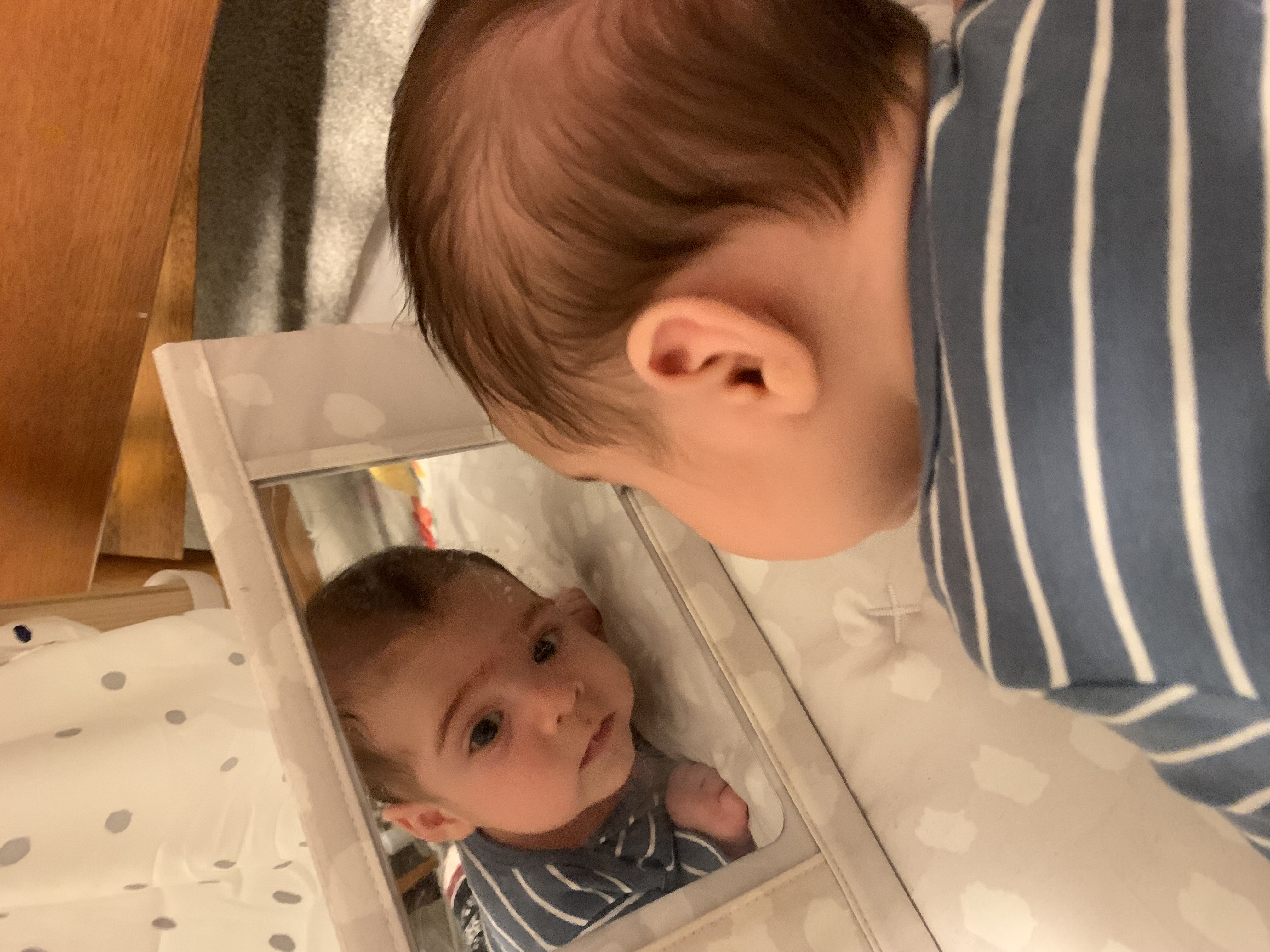15.8: Development of Sense of Self
- Page ID
- 140948
Recognizing Self
Children begin to recognize themselves during the second year of life as they gain a sense of self separate from their primary caregiver. In a classic experiment by Lewis and Brooks (1978), children 9 to 24 months were placed in front of a mirror after a spot of rouge was placed on their nose and their mothers pretended to wipe something off the child's face. If the child reacted by touching their nose rather than the "baby" in the mirror, it suggested that the child recognized the reflection as him or herself. Lewis and Brooks found that somewhere between 15 and 24 months, most infants developed a sense of self-awareness.[1]
In 2003, after extensive analysis of existing research, Phillippe Rochat established a theory around The 5 Stages of Self-Awareness. These stages outline how children learn to identify themselves and the caregivers in their lives as separate, distinct entities. The 5 stages span from birth until age 5 (Rocat, 2003).

Stages of acquiring self-awareness
Stage 1 – Differentiation (from birth)
Immediately after birth, infants demonstrate a sense of their own body as a differentiated entity: an entity among other entities in the environment (Rochan, 2003). They can differentiate the self from the non-self. A newborn knows there is a difference between his image and the background images in a mirror and between his or her environment. Another sign of differentiation occurs when infants contact objects by reaching for them. The infant recognizes the difference between himself and the environment and also gains a sense of how his body is situated relative to that environment (Krisch, 2021).
Stage 2 – Situation (by 2 months)
In addition to differentiation, infants at this stage can also situate themselves in relation to a person. In one experiment, infants imitated tongue orientation from an adult model.
Stage 3 – Identification (by 2 years)
At this stage, the more common definition of self-awareness comes into play, where infants can identify themselves in a mirror through the "rouge test" and begin to use language to refer to themselves. Between the ages of 18 months and 2 years, children learn that the image in the mirror is not only distinct from the rest of the environment (Level 1) and not only distinct from the in-mirror environment (Level 2), but a representation of themselves (Level 3, “identification”). At 18 months, an infant will reach for a mark painted on her body, using only the image in the mirror as an indication that something on herself is amiss (Kirsch, 2021).
Stage 4 – Permanence (2 - 3 years)
This stage occurs after infancy when children know that their sense of self exists across time and space. Rochan describes the permanence state as the “Me-But-Not-Me” dilemma. As toddlers journey towards full self-awareness, they identify the image in the mirror as “self” but still frequently revert to seeing the image as an odd third-person version of self. That can be hard to grasp (and a bit terrifying to imagine) (Kirsch, 2021). It is important to note that Stage 4 permanence develops slowly. Infants still oscillate between an awareness of the self and an awareness of seeing someone else facing them (Rochat 2003).
Stage 5 – (4 to 5 years) Self-consciousness or meta-self-awareness
In stage 5, the young child first realizes that the image in the mirror is not just “me” (Level 3) and not just “me” permanently (Level 4) but the “me” that everyone else sees. 4-year-olds often respond to this realization by becoming mirror-shy, hiding their faces whenever they see their reflections. Now that they know what everyone else sees, they are unsettled (Kirsch, 2021).
[1] Child Growth and Development by Jean Zaar is licensed CC-BY-NC
[2] Image by Rachel Klippenstein-Gutierrez is licensed CC BY-NC

